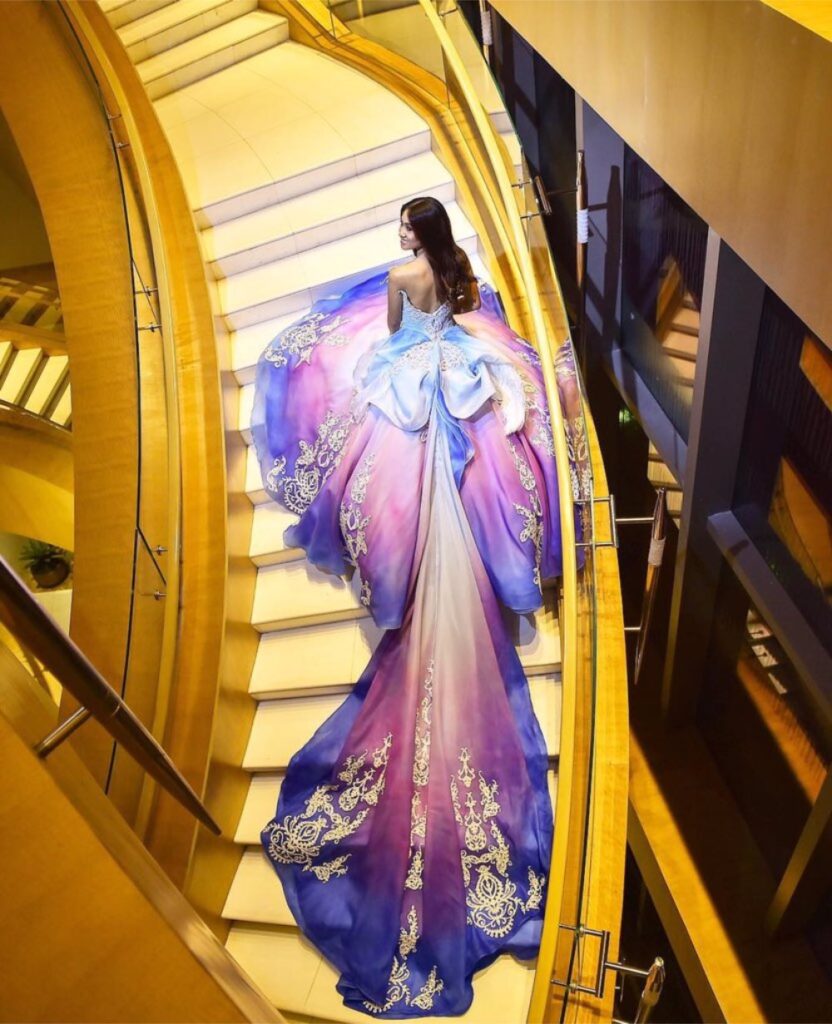As our cities drown in floodwaters because of corrupt officials and contractors, our biggest flaw as a people emerges: we are drawn to the profoundly vacuous, dazzled by surfaces while ignoring the rot beneath, and their sources of wealth.
Over the weekend, a video of a Grab driver with his motorcycle under waist-deep floodwaters was posted on social media. He is trying to get his bike upright, his green Grab box half submerged in the dirty, brown deluge. The video cuts before he succeeds, but you know it’s a battle he has already lost.
Alongside this video that reflects many Filipinos’ reality are videos of the rich, the beautiful, the stupid and hopelessly vacant. They are, as we have found out recently, connected directly or indirectly to government officials or to contractors that have received billions of pesos for flood control projects declared completed but do nothing to control floods.
There is something corrosive about the kind of worship influencers consciously cultivate. When people pour their admiration into the rich, the beautiful and the undeserving, they cheapen other forms of greatness.
Flaunting jewelry, travels, huge walk-in closets and first-class flights, their videos are reposted on TikTok by gushing Filipinos whose lives are made no better by these celebrities.
Fashion icon Heart Evangelista may be posing in designer clothes and jewelry as a brand ambassador, but the optics remain troubling: her husband, Senate President Chiz Escudero, counts among his campaign donors a government contractor that bagged ₱5.1 billion in flood control projects—and questions linger about whether her own wealth and taxes can withstand scrutiny. Then there’s Biñan Mayor Angelo Alonte’s daughter Gela Alonte dancing in another idiotic video; Customs Director Verne Enciso’s daughters Vern and Verniece Enciso on yet another first-class trip; contractors Christopher Co’s daughter and Zaldy Co’s niece Claudine Co on her private flights and tacky designer outfits; and the most galling of all, contractors Curlee and Sarah Discaya showing off their mansion and 38 luxury vehicles totaling hundreds of millions of pesos.


Just when you thought you’d seen the most pretentious, you see Verniece Enciso cracking a boiled egg with a silver egg breaker while it sits in a silver holder. I nearly threw up in my mouth watching the video, which appears to be shot in their home. Then I saw another video where she’s doing the same thing—this time in what appears to be a resort abroad because she’s dressed to the nines for breakfast while a male voice in the background prods her on this all-important task of breaking a boiled egg.
It isn’t just the sheer affectation that’s ridiculous, it’s that this woman thought this was a flex—in a country where daily wages can’t even cover the price of the very items she used to eat a boiled egg with. Of course, the equally tasteless among us couldn’t get enough of her display of pagka-sosyal.
Related story: Stealth wealth is the new flex of the one percent
Related story: Attention, travelers: Pay travel tax first to generate eTravel QR code
Related story: The rise of quiet luxury in Philippine architecture
An old story, retold

The biggest irony in this ongoing story of corruption is that the list of contractors and their projects was revealed by President Bongbong Marcos Jr.—himself coming from a corrupt family whose ill-gotten wealth is estimated to be upwards of $10 billion. Marcos Jr.’s wife, Liza Araneta, and sister Imee Marcos continue to be glorified on the cover of society magazines—as if rich people don’t care about justice.
The American economist and sociologist Thorstein Veblen explained this display of riches in 1899 when he wrote about “conspicuous consumption.” People flaunted wealth not to meet needs but to announce status. Adam Smith saw it even earlier, warning that we are “disposed to admire, and almost to worship, the rich and the powerful” while neglecting virtue.
Today, the story is replayed every minute on TikTok.



For all the entertainment and the aspiration/inspiration provided by influencers, there is something corrosive about the kind of worship they consciously cultivate. When people pour their admiration into the rich, the beautiful, and the undeserving, they cheapen other forms of greatness. Teachers, nurses and scientists rarely trend; rich TikTok stars do. The reward system of society tilts from what really matters into what is merely performance.
And yet, it feels inescapable. The algorithms of our time magnify the illusion: wealth looks like wisdom, beauty looks like authority, fame looks like achievement.
We don’t envy them, we don’t hate them—but we sure as hell care when their lifestyles are funded by taxpayer money that should have kept all of us safe from the floods.
They already have their money, their platforms, their faces. It’s we, the audience, who invest them with more power than they’ve earned. And maybe the harder question is not why they command our attention—but why we continue to give it so freely, so abundantly.
Psychologists argue that humans are wired for social comparison. When someone appears to live above us, we both resent and revere them. I’d like to add another response: we question them—especially in a country where a mere two-hour monsoon rain can now flood our cities, leaving communities stranded and homes destroyed.
The outrage that is felt by many now isn’t about envy, it’s about corruption. We ask why some live in opulence while basic infrastructure fails, why luxury and leisure are flaunted amid widespread hardship, and why systems meant to protect the public seem to serve only the privileged.
We don’t envy them, we don’t hate them—but we sure as hell care when their lifestyles are funded by taxpayer money that should have kept all of us safe from the floods.








